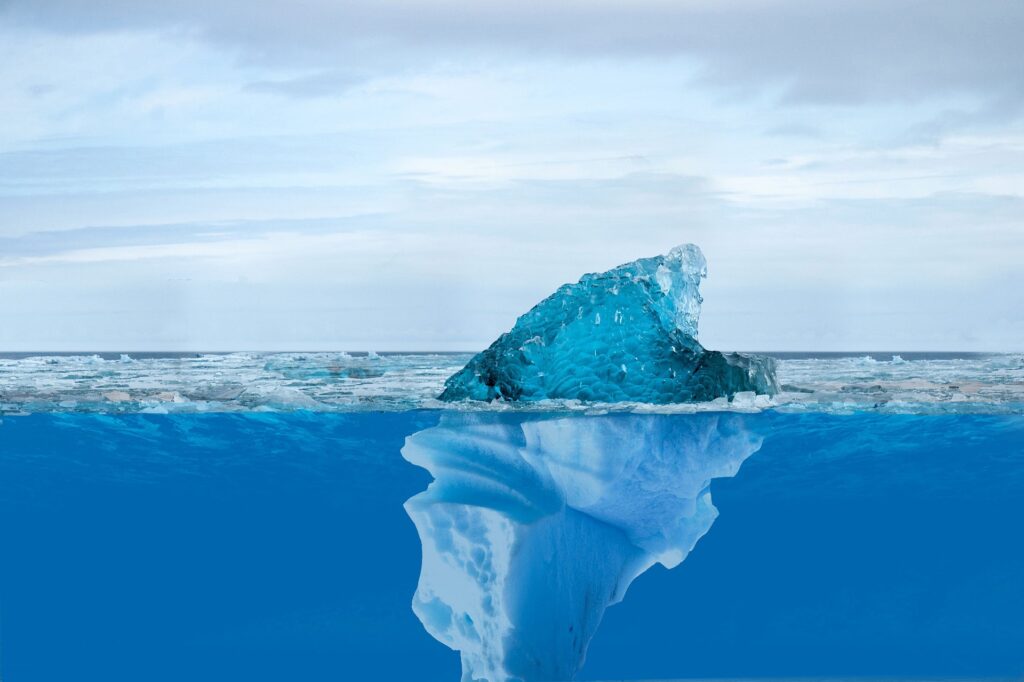And most of it’s not even you

Image by Naomi Booth from Pixabay
This is why science makes people nervous
It keeps coming up with uncomfortable discoveries; things that jolt us out of our assumptions about ourselves and demand that we question the evidence of our senses.
Like, the earth is not the center of the universe. That’s an oldie, but it’s still tough for some of us to accept. Also: cavemen did not ride dinosaurs and the earth is not flat. Otherwise, cats would’ve knocked everything off it by now.
More recently, scientists have begun exploring the human microbiome. And I’m talking recently: the papers reporting the final complete human genome sequence didn’t come along until 2022.
TLDR: knowing what constitutes “us” in our bodies has allowed researchers to look further into what else we’re composed of.
And it turns out, there’s a whole lot of what else.
We’ve been colonized. Here’s the deal: only about a third of the cells in your body, my body, or your favorite barista’s body are human.
The rest of what you think of as “you” is a vast population of microscopic critters living in you and on you.
I don’t care how often you shower or how assiduously you vacuum and do your laundry. You, my friend, are mostly microbes.
Don’t take that the wrong way
Although, who could blame you if you did? Ever since humans figured out that such things as microbes existed, we’ve mostly been at war with them.
Think microbe and you think disease, right? Pathogens responsible for uncounted human deaths. Smallpox! Cholera! Tuberculosis! MRSA!!!
Kill the suckers!
It’s true that antibiotics and vaccines have saved lives, perhaps millions of lives. But we’ve also paid a price in vastly increased autoimmune diseases and allergies according to some experts.
Because not all of those little buggers riding around in us and on us are our enemies. Yes, it’s weird to think that our bodies, especially our guts, are densely populated with bacteria, viruses, fungi and archaea.
But we couldn’t live without them. Researchers are still figuring out how our partnership with these wee critters work, but we do know they play crucial roles in digestion, immune system regulation, vitamin manufacturing, and disease protection.
It’s a microbe’s world. We just live here
“Humanity is just a speck in the massively bacterial world. We need to get used to that idea.”
So writes Dr. Martin J. Blaser in his 2015 book Missing Microbes — and I am indebted to this American Museum of National History article by Ashton Applewhite (polymath, anti-ageism activist, and author of This Chair Rocks) for pointing me to Dr. Blaser’s work.
Picture the Tree of Life. Now picture it filled up mostly with microorganisms. So many, and of such astonishing variety, that E. coli and Clostridium, two of the more recognizable species, are far less closely related to one another than human beings are to corn.
Kind of mind-blowing, isn’t it?
So if, as Dr. Blaser says, we are hosts to vast collections of microbial communities — ones that have evolved along with us to help us operate basic life processes from the moment we’re born — it makes sense that they play a huge role in our health.
And that disrupting the balance between “them” and “us” can cause trouble.
Don’t get me wrong: I’m not suggesting we all stop taking antibiotics or vaccines. I’m all about getting every flu and Covid and, oh dear God, shingles shot I’m offered.
I’m old enough to remember the terror of polio and kids in iron lungs. As a little boy, my father nearly died from diphtheria, a disease now almost absent in American kids.
Microbes are very powerful little beings. They deserve our respect, is all I’m saying.
Maybe don’t pester your doc for pills every time you get the sniffles. Give your flora a fighting chance first.
Here’s the upside: you’re never alone
Not even close. You contain multitudes, literally. Think about that the next time you’re stuck at a party or a conference where you don’t know anyone.
And if that doesn’t help, allow me to introduce you to the very close friend you never knew you had:
These itty bitties don’t live in your gut. They live on your skin — in particular, on your face. They’re wee small, between 0.15 millimeters [mm]and 0.4 mm: it would take a small party of them to cover a pinhead.
Some Demodex eat skin cells. But not so many that you’ll miss them or have holes in your face or anything like that.
Others eat sebum, the oily substance your hair follicles secrete to protect your hair and skin. They spend the day cozily tucked up in your follicles, minding their own business and sipping on sebum.
It’s only at night that they emerge onto your surface. To mate. Face mite orgies while you’re sleeping, isn’t that a fun thought?
Then they crawl back into your pores. Where they lay their eggs.
And no, it doesn’t matter how often or how well you scrub and exfoliate. You can’t get rid of them; at least not all of them.
If you could, who knows? You might be plagued with skin overgrowth or sebum-filled pustules.
Under normal conditions, Demodex mites are no problem. Only in rare situations where something has caused them to multiply out of control — which can be whatever has seriously suppressed the immune system; one possible cause is chemotherapy or immunosuppressive treatment.
In that case, it’s possible to develop a particular, itchy rash called demodicosis.
But that hardly ever happens. Don’t worry about it.
You’re welcome.
And don’t forget the little eyelash mites that look like tiny spiders and eat the dead skin cells from your eyelids, creating that gooey crusty stuff around your eyes when you wake, affectionately known as “sleep.” As in, “wiping the sleep from your eyes.” 😄
Indeed! I have lots and lots of eyelash friends . . .